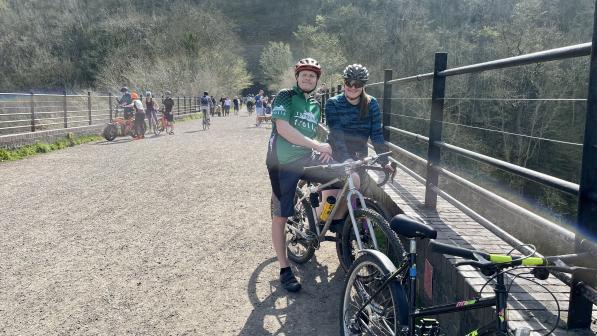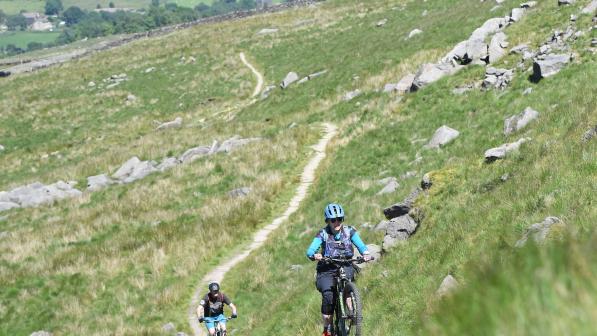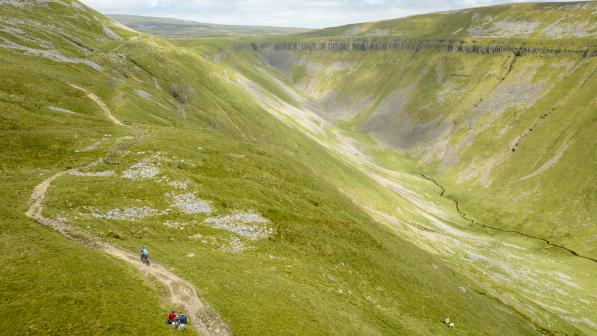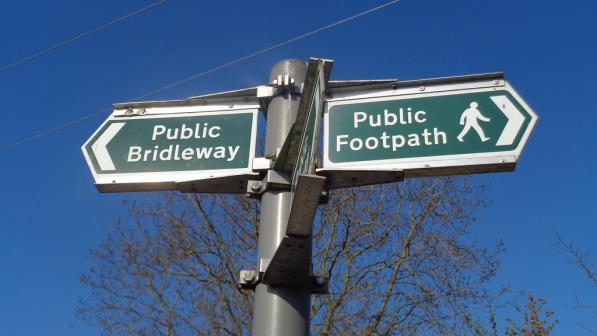Calls to double the number of bridleways in the Peak District

England has around 190,000 km of public rights of way, but almost 80% of them are footpaths, meaning only a fifth can be ridden by bike or on horseback. The national average hides large variation between different areas: within the Peak District National Park, Peak District MTB has found only 11% of rights of way are open to riders.
Peak District MTB want to change that. They are asking local riders and people familiar with the area to pinpoint which trails should be prioritised to be upgraded, such as short sections of footpath that would form the missing link in a bridleway loop.
There is plenty of scope and room to improve the bridleway network.
Dan Noble, chair of Peak District MTB

Peak District MTB chair, Dan Noble, commented:
“When Peak District MTB was first established around five years ago, our core goal was to increase the amount of access available to mountain bikers. In that time there have been some notable successes, especially around the fringes of Sheffield through work done by [advocacy group] Ride Sheffield, and more recently we have had some success on the Roaches and worked with the National Trust at Lyme Park to improve access.
“The Peak District National Park covers some 1,437 km², the park’s northern limits are on the A62 between Huddersfield and Oldham, and its southernmost point is on the A52 road near Ashbourne. In the east, it borders the western fringes of Chesterfield and Sheffield and reaches as far west as the outskirts of Macclesfield. There is plenty of scope and room to improve the bridleway network.”
A lack of choice
Cycling UK and OpenMTB’s 2017 Rides of Way survey of 11,000 off-road riders revealed that almost half of riders believe the current rights of way system makes it hard to put together a route. Making more footpaths multi-use would make it easier to plan routes and avoid busy roads, and help more people to explore the countryside.


Doubling the number of bridleways within the Peak District National Park would amount to an extra 220km of trails available to cyclists and horse riders.
Some might be concerned this could lead to conflict on shared trails, but as Cycling UK, British Horse Society and Ramblers all agree, incidences of conflict are rare. Increasing access for cyclists and horse riders would be beneficial in this respect, as people would be dispersed over a wider area rather than being concentrated on a small number of bridleways.
We need a rights of way network that reflects the needs of society for today and tomorrow, not of a hundred years ago.
Kieran Foster, Cycling UK's national off-road advisor
Local authorities can use public path creation agreements and orders to dedicate new rights of way, or upgrade footpaths to bridleways, if it would be of benefit to the public. The problem is it can be a lengthy and complicated process, which could explain why these powers are rarely used. It’s clear something needs to change.
Kieran Foster, Cycling UK’s national off-road advisor has the solution:
“If we are to encourage people to genuinely connect with the countryside, farming and nature, then we need a rights of way network that reflects the needs of society for today and tomorrow, not of a hundred years ago.
“There is so much that can be done: simplifying the system for recording rights of way, giving cycle tracks and permissive paths higher levels of protection, and converting disused railway lines to multi-use greenways. These would all have huge benefits for society.
“It’s clear from our off-road survey that having only 22% of rights of way open to riders isn’t enough, but getting the Peak District National Park up to the national average would be a big step in the right direction.”
Get involved
If you ride in the Peak District, you can help.
According to Paul: “To start with, we need to know what you think should be upgraded. No brainer double-track footpaths that should be a bridleway, dead-end bridleways that completed will fix that loop for you, anything…. we want to hear about them.”




